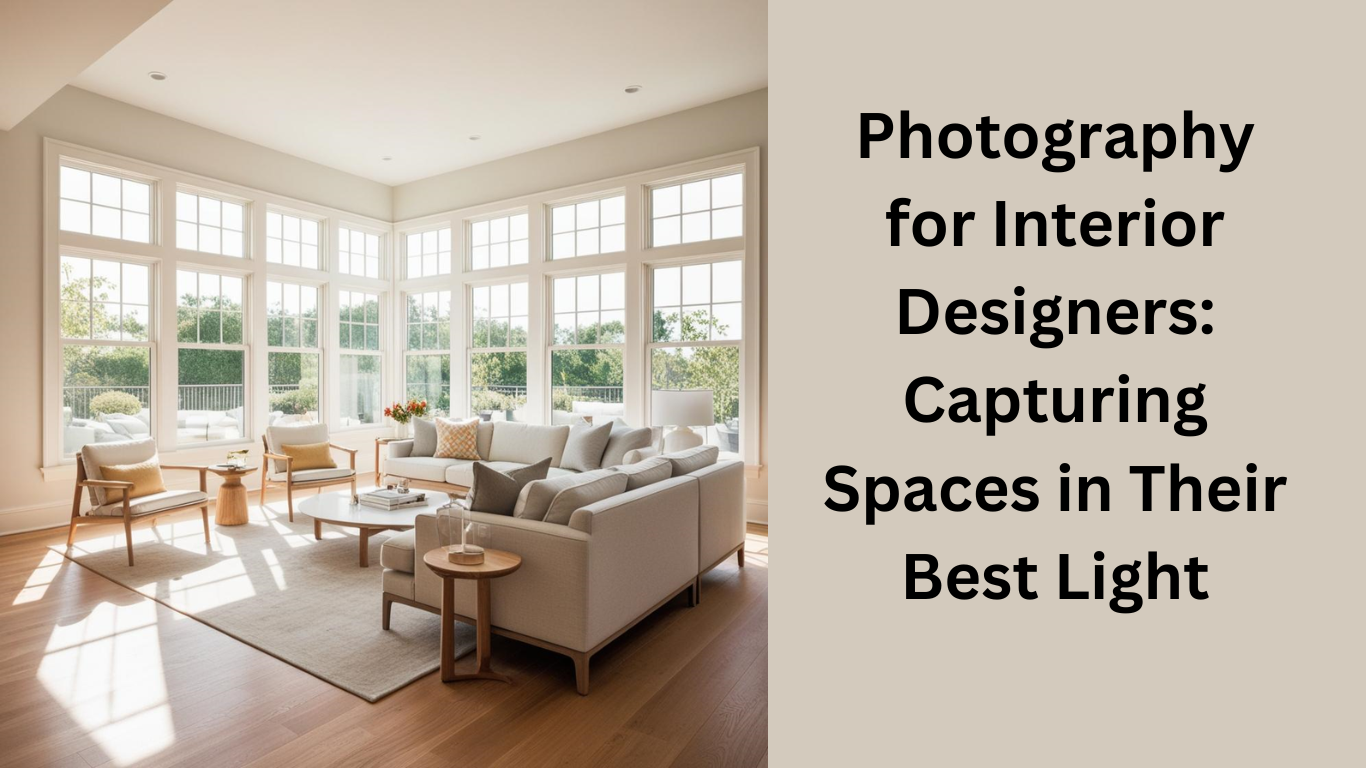Why photography matters in showing off your design vision?
Imagine taking weeks to perfect every detail in a room-the way pendant lights add just a soft glow, or the subtlety of the cushion textures. Imagine all that undone by a grainy, poorly lit photograph. Enough to make your hair stand on end. As an interior designer or architect, your work deserves to be seen in its best light-literally and figuratively.
This is beneficial as high-quality photography explains your designs in terms of the narrative. It catches both the mood and atmosphere as well as aesthetic qualities in the spaces. High-quality photography could be of any use such as including in portfolios, presentations before a client, or features in gloss magazines in which your ideas would become clearer and powerful enough in front of viewers.
How Do You Find the Perfect Light for Interior Photography?
At their very best, interior photographs revolve around light. Natural softness and diffusion make for very beautiful highlights of textures and colors. But what does one do when the light just isn’t perfect?
This is where lighting techniques really kick in. For example, a “golden hour” will imbue your shots with the warmth of sun. Reflector can also light the dark corners. Artificial light from the softbox can be a stand-in for natural light indoors. Light sources play in bringing every photo to life, making it dynamic and real while putting your space out as imagined.

when the light just isn’t perfect?
This is where lighting techniques really kick in. For example, a “golden hour” will imbue your shots with the warmth of sun. Reflector can also light the dark corners. Artificial light from the softbox can be a stand-in for natural light indoors. Light sources play in bringing every photo to life, making it dynamic and real while putting your space out as imagined.
What Composition Techniques Elevate Your Interior Shots?
Consider composition as the framework by which your viewers will view your design. A well-composed photo will guide the eye across it and show the best aspects of a room.
The “rule of thirds” is another classic starting point: imagine that your frame is divided into nine equal sections, and place key elements along these lines. Another technique to use is leading lines, such as the edges of furniture or architectural features, to draw your viewer’s eye to specific focal points. Don’t be afraid to play with angles; a low perspective can emphasize grandeur, and a top-down shot might better show layout and balance.

What is the role of post-processing in interior photography?
Post-processing is where good photos become exceptional. With tools like Adobe Lightroom or Photoshop, you can adjust brightness, contrast, and color balance to give your photos a polished, professional look.
Be careful not to over-edit. The aim is to make it better, not worse, than life. A space should look as desirable in photographs as it does in person. It can be the fine detail—a lightening of shadows, a correction of vertical lines—that makes the difference. Imagine editing as a final touch on a masterpiece.
How Can You Tell a Story Through Your Interior Photography?
Every space has a story, and your photography should be telling it. Begin with the purpose of the room. Is it a warm living room for family gathering? A minimalist office meant to inspire one to be productive?
Capture details that evoke emotion: a steaming cup of coffee on a worn table, the soft fold of a throw blanket, or sunlight streaming through sheer curtains. While wide shots provide context, close-ups reveal the soul of a space. Both come together to create an overall visual journey that hits the heart of your audience.


